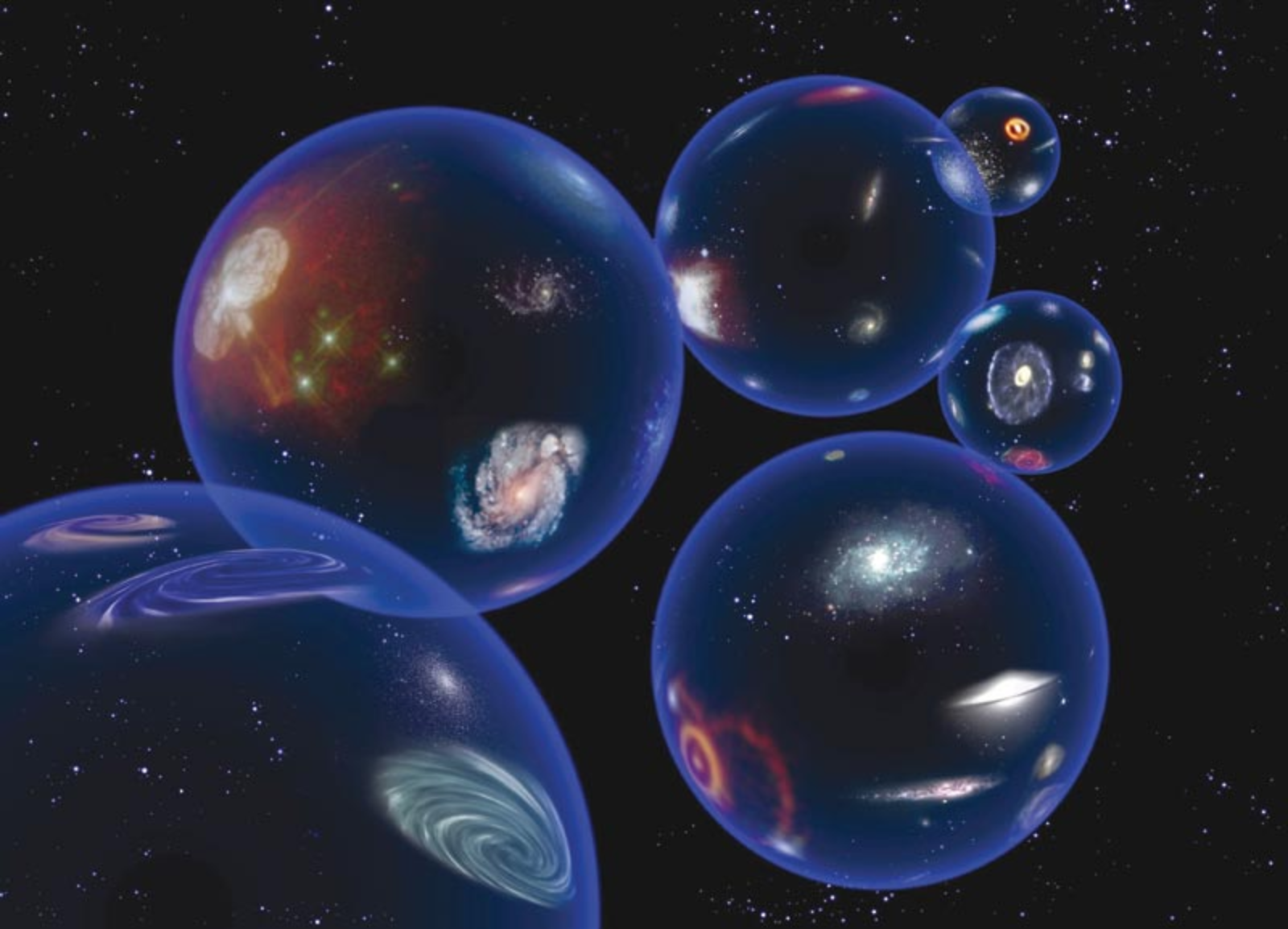In this post, fundamental concepts of matter, particles and multiverses are presented. The motivation of this post is to have a precise and clear understanding of different theories related to the universe exploration. Theories like big bang, multiverse, eternal inflation among several others can be subjected to different opinions and interpretations, however, they are often discussed in terms of discovering the unique mysteries surrounding universe.
- Pre Big Bang
- At Big Bang
- Post Big Bang/Eternal Inflation Theory
- Matter
- Antimatter
- Dark matter
- Dark energy
- Fermi Paradox
- Hubble’s Law
- Multiverse
- Nietzsche’s idea of eternal recurrence
- Useful Resources
Pre Big Bang
The most curious and mysterious question that puzzles human mind is what existed before the big bang. The intriguing question that comes into mind is – What were the events/reasons that led to big bang or the beginning of the existence of our universe? The most probable answer to these questions arise from the idea that there was a extremely hot, infinitely dense point called singularity that exploded which led to the birth of not only our universe, but the start of space and time. Before big bang, time didn’t exist and was undefined, in simpler terms, \( t = \infty \).
At Big Bang
The Big Bang is considered a model for describing the phenomenon of the universe creation. Right at the big bang, time and space came into existence. The time grew with each passing moment (i.e., \( t = 0, 1, \dots \)). Likewise, space expanded in unimaginable manner leading to further development of the entire universe.
 |
|---|
| Big Bang |
Post Big Bang/Eternal Inflation Theory
It describes the universe’s expansion after the big bang. The accelerated expansion of the universe space post big bang. As the singularity point was extremely hot, the universe that came out of it also contained extremely high temperatures. Subsequently, post the big bang, this temperature began to cool down as the time went by and as the universe gathered momentum in expansion.
Matter
Everything in the observable universe is made up of matter. Matter is made up of atoms that is composed of subatomic particles like electrons, protons, neutrons, quarks, neutrinos, muons, tauons etc. The details on the topics of the particles are described here.
Antimatter
Antimatter is opposite to the observable matter. This implies that antimatter is composed of antiparticles like antielectons (aka positrons), antiquarks, antineutinos, antimuons, antitauons etc. These particles are similar (in mass magnitude) to their counterpart particles seen in observable matter with the only exception that they carry opposite charge.
When antimatter comes in contact with matter, then they both get destroyed and emits energy in the form of radiation. In terms of Paul dirac’s equation:
\[ (i\not{\partial} - m) \psi = 0\]
\(i = \) imaginary unit,
\(m = \) rest mass of electron,
\(\psi = \psi(x, t) \) is the wave function for the electron
Dark matter
Universe is comprised of 5% of the matter that is observable which is often termed as normal matter. However, according to Lambda-CDM model of cosmology, there is 85% of the matter that remains unobservable as it comprises of particles that don’t absorb and emit light and it doesn’t interact with the electromagnetic force. This unobservable matter is often termed as dark matter.
Dark energy
It is one of the unexplained or mysterious force in the universe which is thought of as the main driving force of our universe’s accelerating expansion. Of the 85% of the unobservable matter, 27% forms the dark matter while the remaining 68% consitiutes dark energy.
Fermi Paradox
This paradox illustrates the contradiction between absence of evidence of extraterrestrial civilizations and the presence of these civilizations. This explains the potential thought of not finding the life anywhere other than our planet earth. Outline of this contradiction is as described below:
- The Milky Way contains hundreds of billions of stars, and billions of them are similar to the sun.
- It is highly likely that some of these stars will have planets that are similar to Earth.
- If we assume – via the Copernican principle – that Earth is not particularly special, then intelligent life should also exist on some fraction of these Earth-like planets.
- Some of these intelligent life-forms might develop advanced technology, and even interstellar travel.
- Interstellar travel would take a long time, but as there are many sun-like stars that are billions of years older, there has been plenty of time for such travel to have occurred.
- However, there is no convincing evidence that this has happened. In other words, given all this, why haven’t we met or seen any trace of aliens? Where is everybody?
Hubble’s Law
Hubble’s law describes the relationship between the distance and recession velocities of galaxies. It is considered as the observational basis for the universe expansion and provided the notion that more distant objects move faster than nearby ones. Hubble’s law describes a direct correlation between the distance to a galaxy and its recessional velocity as determined by the red shift. It can be stated as
\[v = H_0 r \]
\(v = \) recessional velocity
\(H_0 = \) Hubble Constant
\(r = \) distance
Multiverse
The theory of multiverse suggests that we could have a universe like our own having same occurrence of events. We could imagine that there are parallel universes like our own having our own versions doing exactly same or may be different things at each moment.
 |
|---|
| Multiverses |
Nietzsche’s idea of eternal recurrence
The idea behind this philosophical theory is that everything i.e. the entire universe will repeat itself over and over again. Imagine repeating your life, repeating again and again with the occurrence of same actions and events taking place in exactly the same manner without any alterations.